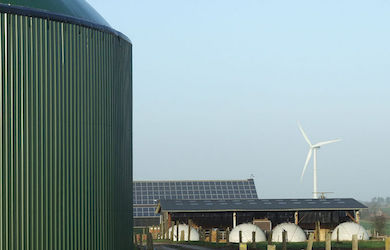What is Geoengineering?
Geoengineering is the deliberate manipulation of natural systems on a large scale in order to counterbalance negative forms of climate change. Strategies usually fall into one of two categories[1]:
- Solar Radiation Management – whereby a portion of the Sun’s energy is reflected away into space, reducing temperature rises on Earth.
- Greenhouse Gas Removal – whereby harmful gasses in the atmosphere are removed in some way.
The concept is not new, having been a topic of discussion for five decades[2]. More recently, there has been a push to accelerate efforts in this field.
Figure 1: Altering cloud composition is a potential geoengineering solution.[5]
Pressure to Move Forward
The National Academies of Science in the USA has called on the government to pursue geoengineering research[3] more earnestly. However, they acknowledge that such endeavours are risky and could have unintended consequences.
Progress in geoengineering research has seen recent boosts in the USA in the form of government funding and research efforts from nonprofit organisations.
Potential Geoengineering Solutions
There are numerous proposed geoengineering strategies, which are certainly more complex and thought-out than the somewhat Machiavellian (not to mention fictional) efforts of Mr. Burns in Springfield during the mid-90s. Options that are often discussed include:
- Spraying reflective aerosols into the atmosphere to increase the amount of solar radiation away from the Earth.
- Putting reflectors in space to reflect solar energy away from the planet in the first place.
- Altering cloud composition at high or low altitudes to increase reflections away from the surface and allow more heat to escape.
- Global-scale tree planting.
- Charring and burying biomass.
- Extracting carbon from the atmosphere directly by machines or by introducing minerals that will react with CO2 in the atmosphere.
- Adding nutrients to the ocean to increase the amount of carbon that is drawn down.
- Altering the amount and dispersion of rucks in the ocean to increase the amount of stored carbon.
How to Move Forward
Clearly, the potential steps come with risks, most notably unforeseen consequences that could be just as problematic as the issue they are seeking to solve (or worse).
Furthermore, as the report by the National Academies of Science points out, for a solution to be effective, it will require coordination among many nations all over the world.
For now, increased efforts to understand our options are underway, including an upcoming balloon experiment in Sweden to explore the possibility of releasing particles that would block out some energy from the Sun.
About Pager Power
Pager Power undertakes technical assessments for developers of renewable energy projects and tall buildings. For more information about what we do, please get in touch.
References
[1] University of Oxford, 2018, What is Geoengineering, geoengineering.ox.ac.uk.
[2] Caldeira, K. and Bala, G. (2016), Reflecting on 50 years of geoengineering research, AGU Publications.
[3] Januta, A. (March, 2021), U.S. should research solar geoengineering to fight climate change but exercise caution, scientists say, Reuters
[4] Dunne, D. (2018), Explainer: Six ideas to limit global warming with solar geoengineering, Carbon Brief.
[5] Pero Kalimer0 (July 2017) from Unsplash.com. Last accessed on April 2021. Available at: https://unsplash.com/photos/9BJRGlqoIUk




